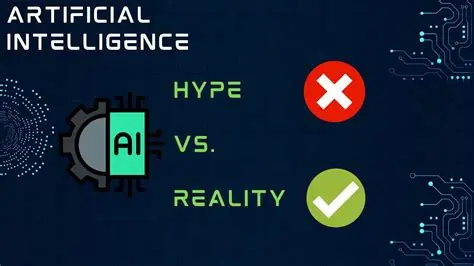
Artificial intelligence is rapidly transforming countless industries, and dentistry is no exception. Lately, a wave of companies has been marketing so-called “AI dental receptionists” that promise to answer your calls, book appointments, and free up your front desk team.
On the surface, it sounds like every dentist’s dream: a 24/7 receptionist that never gets tired, never makes mistakes, and costs just a fraction of a real salary. The demo usually seals the deal—the voice sounds natural, the responses are quick, and it even handles interruptions without breaking stride.
But once practices start using these systems in day-to-day operations, many quickly discover that the reality doesn’t match the sales pitch. Here’s what you need to know before considering one.
Why AI Receptionists Look So Good in Demos
AI call systems are built to impress in a short, controlled setting. They speak clearly, don’t get flustered, and answer instantly. Compared with a busy staff member juggling multiple calls, the AI can seem like a huge step up.
Other apparent benefits also stand out:
- Always available – No more missed calls during evenings or weekends.
- Lower cost – Far cheaper than adding another full-time team member.
- Consistency – It never deviates from the script.
For dentists frustrated by unanswered calls, the idea of an AI that never sleeps feels like the future of front desk management.
Why Dentists Are Tempted by AI Receptionists
The growing interest in AI isn’t just curiosity—it stems from very real challenges practices face every day:
- Human error – Even great staff forget details or freeze when asked difficult questions. Dentists assume AI will be “perfect.”
- Turnover headaches – Receptionists leave, training takes time, and the cycle repeats. AI sounds like a permanent solution.
- Rising costs – A few hundred dollars per month for AI looks like a bargain compared to salary plus benefits.
- Conversion worries – Many dentists believe their front desk isn’t booking enough patients and hope AI scripts will improve results.
Dentists are buying into more than hype. They’re buying into the promise of solving long-standing operational frustrations.
 What Actually Happens in Real Practices
What Actually Happens in Real Practices
Scroll through discussions on forums like Dental Town, and you’ll see a pattern of disappointment:
- Patients forced to repeat names, dates of birth, or insurance details because the AI misses them.
- Calls derailed when the AI can’t handle insurance or treatment-related questions.
- Patients losing trust after realizing they’re talking to a robot, not a person who understands them.
Many practices eventually give up and return to live staff or voicemail. What looked futuristic in the demo often becomes a daily liability.
Why These Systems Break Down
The truth is, most “AI dental receptionists” aren’t custom-built marvels. They’re usually cobbled together from existing tools:
- A language model (like ChatGPT) to generate responses.
- A voice AI tool to read them out loud.
- Scheduling software to connect with the calendar.
That’s about it. In most cases, vendors are just repackaging off-the-shelf tools and reselling them at a premium.
The problems are predictable:
- Memory limits – AI can only “remember” a certain amount of conversation before losing track. Patients end up repeating themselves.
- Cost-performance tradeoff – Making the AI smarter slows it down and raises costs, but keeping it fast means it’s too simple to be effective.
In short, the tech isn’t failing because it needs more training—it’s failing because it’s not yet capable of handling the real complexity of dental office calls.
The AI Receptionist Gold Rush
So why are so many vendors pushing these products? The answer is simple: profit.
Running one of these systems might only cost the provider $10–$20 per month in infrastructure. But many dentists are being charged hundreds. Even if most practices cancel within six months, the companies make plenty of money in the meantime.
That’s why the market has suddenly exploded. It’s not necessarily about revolutionizing dentistry—it’s about cashing in while AI hype is high.
A Smarter Path for Dentists
AI may one day be able to handle patient calls seamlessly, but today, if you are looking to get more dental patients, the smarter bet is to double down on proven strategies that actually drive growth. Here’s where practices should focus:
1. Train Your Staff for Real-World Scenarios
A well-trained receptionist can handle objections, show empathy, and build trust in ways AI can’t replicate. Patients don’t just want an appointment—they want to feel understood and cared for.
Investing in staff training pays off in multiple ways:
- Higher conversion rates from calls to booked appointments.
- A consistent, professional patient experience.
- Reduced stress for dentists who can rely on their team.
Regular role-playing, call audits, and mystery calls are far more effective (and sustainable) than outsourcing conversations to AI.
2. Build Trust and Reputation
Your practice doesn’t grow just because the phone is answered—it grows because patients feel confident choosing you. Strategies that build social proof compound over time:
- Patient testimonials – Video testimonials are especially powerful because they showcase real people and emotions.
- Online reviews – A steady stream of 5-star reviews on Google and other platforms makes you the obvious choice in your area.
- Reputation management – Responding to reviews and maintaining a strong online presence shows professionalism and credibility.
Unlike AI experiments that may backfire, these trust-building efforts increase patient flow year after year.
3. Invest in Digital Visibility (SEO & Content)
The best receptionist in the world—human or AI—can’t help you if the phone never rings. That’s why many of the most successful practices prioritize dental SEO and content marketing:
- Ranking high in Google when patients search for treatments like “Invisalign near me” or “emergency dentist” puts your practice in front of high-intent patients.
- Educational blog posts, videos, and guides build authority and attract organic traffic.
- Optimized websites and strong local SEO ensure you’re found by people in your community, not just anyone online.
SEO and content marketing are compounding investments. The articles and videos you publish today can keep bringing in new patients for years to come.
4. Enhance Systems That Support Staff
Instead of replacing staff with AI, use technology to make their jobs easier:
- Call tracking to measure performance.
- Automated reminders to reduce no-shows.
- Online scheduling to capture patients outside office hours.
These tools empower your team without undermining the patient experience.
Conclusion
AI dental receptionists sound exciting, but right now they create more problems than they solve. Patients want empathy, trust, and clarity—things that real people, not robots, deliver best.
If you want consistent growth, the smartest move is to invest in your staff, your reputation, and your marketing systems. Those are compounding investments that will outlast any short-lived AI trend.

 What Actually Happens in Real Practices
What Actually Happens in Real Practices



